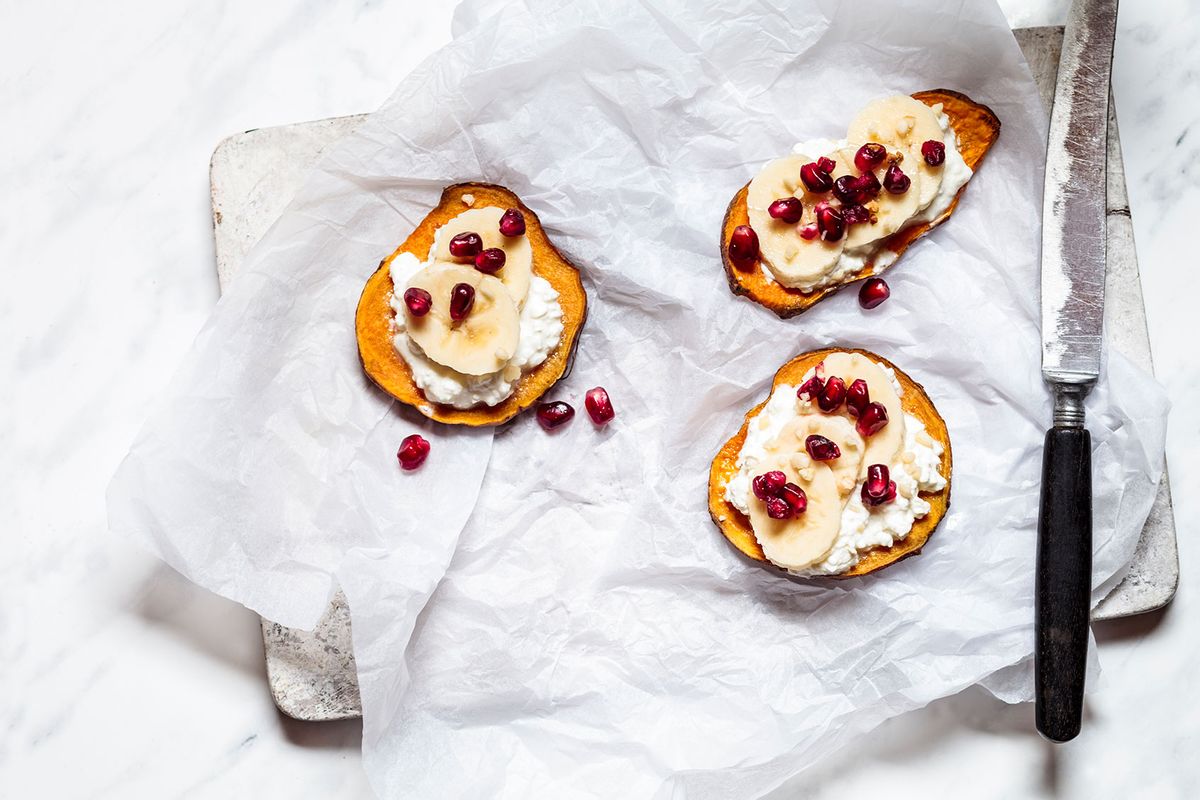For too long, cottage cheese was unfairly yoked to the diet industrial complex or discarded as an old-school, if virtuous, deli or diner side. However, it's seen some reputational repair in recent years, observable through a series of headlines: "Can We All Finally Admit We Love Cottage Cheese?" Bon Appetit implored in 2017; a year later, the New York Times' food section countered with the more inquisitive "Is America Ready to Love Cottage Cheese Again?"
In 2019, Bon Appetit volleyed back with a declaration that our collective summers all needed more cottage cheese (they do), before the Times gave the ultimate decree last month: "Cottage Cheese Makes a Comeback."
It's been a slow build-up for the nation to recognize something many of us have known all along: It's time to stop underestimating cottage cheese — and not just as a scoop or a side, but as an ingredient.
Of course, Eastern European, and specifically Jewish, culinary culture is ahead of us here. Think of noodle kugel — sweet or savory — that is made dense, but not heavy, thanks to a mixture of eggs, egg noodles, sour cream and cottage cheese. In some of the remaining Polish restaurants that dot Chicago's Avondale neighborhood (a portion of which Polish immigrants once dubbed "Jackowo," pronounced yahts-KOH-voh, which roughly translates to the Village of St. Hyacinth, after the corridor's anchor parish) diners can still find kluski z serem, sometimes just called "Polish noodles."
They are almost like a simple, deconstructed kugel, made by folding warmed cottage cheese and sweet, caramelized onions into a bowl of egg noodles.
Cottage cheese, much like other acid-coagulated cheeses like ricotta, feta and farmers cheese, will never melt into a smooth, velvety pool of fondue or mix uniformly into a bechamel. It's just not built for it. However, it's worth learning to love the lumps, or at least learning how to manipulate them, to enjoy the unique dimension they bring to many dishes.
We need your help to stay independent
For instance, in the directions for Alison Roman's Cottage Cheese Cake with Apricots — which the cookbook writer shared both in a 2021 issue of her recipe newsletter, fittingly called "a newsletter," and then again in her 2023 dessert cookbook "Sweet Enough" — she writes that one could ostensibly swap ricotta for cottage cheese, but she wouldn't recommend it.
"While I say you can use ricotta, I really want you to use cottage cheese," Roman writes. "The little cheese curds that sink to the bottom get caramelized and wow, it's almost like I did that on purpose … I think substitutions are great. But know that my intentions are pure and purposeful, so follow the recipe if you can."
Late last week, "Good Eats" creator Alton Brown shared a new recipe for a wedge salad with salty pork bits and a thick, creamy blue cheese dressing. "Yes, we do need a new wedge salad recipe," he wrote on Instagram. "And yes, the dressing has cottage cheese in it!"
While I'm not always a big fan of the wedge salad (I prefer a pre-chopped salad, which my lapsed Catholic guilt interprets as a small knock against my work ethic), I do have a soft spot for any dish that feels like it should be served at an oak-walled steak house alongside an ice-cold dirty martini, so I dutifully whipped up a batch of the dressing this weekend. It's excellent; the light tang of the cottage cheese cuts through the sulfur-laced funk of the blue, and when combined with Kewpie and buttermilk, whips into a fantastically airy final product.
One can also always remove the lumps from cottage cheese by giving it a quick blitz in the blender, something that I was reminded of when I saw an Instagram post from Eater senior writer Bettina Makalintal (@crispyegg420) featuring a bowl of thick rigatoni coated in an eye-popping green sauce made by mixing cottage cheese, blanched greens and pasta water. The caption read: "blended cottage cheese is good. case in point: this kale sauce." Take it from experience that this method also works with oil-packed sun-dried tomatoes, mashed butternut squash or even just loads of lemon zest — basically any ingredient that be blended smooth and would benefit from a creamy, acidic lift.
Also, if you don't want to blend the cottage cheese yourself, brands like Friendship Dairy and the Kroger store brand have released whipped cottage cheese products, excellent for blending into sauce or smearing on toast.
The only stipulation is this: Non-fat cottage cheese isn't worth buying; the curds are rubbery and the lack of fat is offset by the inclusion of additives. In fact, when a colleague asked the other day if fat-free cottage cheese could simply be tossed in the trash, I responded, "Like a layup." If you're going to fall back in love with cottage cheese, fall in love with the full-fat version, lumps and all.
Read the latest
about this topic

Shares